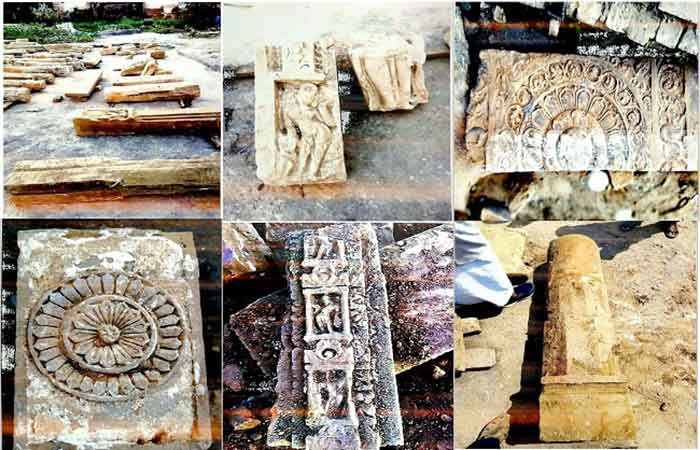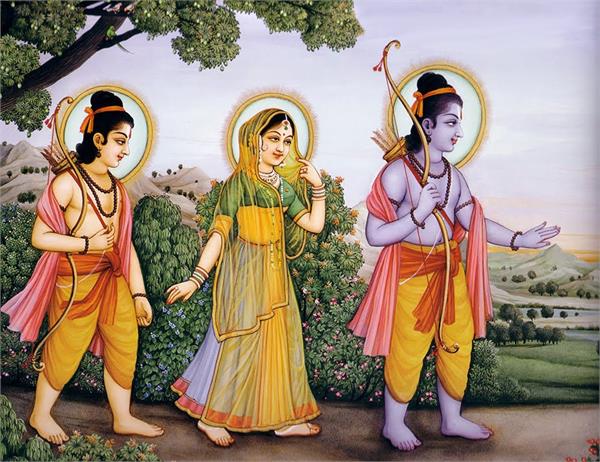
Country is under lockdown. Most of the activities related to production and construction have come to a standstill barring few. One such is the construction of the Ram temple. The path for this has been cleared by the Supreme Court judgement. This judgement has been not widely debated as ‘Muslim side’ had conceded that whatever be the decision of SC, they will accept it. The Hindu side, RSS and its progeny, had hinted times and over again that come what may the temple will be constructed at the site only. SC in its wisdom did not much go into the legal ownership of land. As in earlier Allahabad High Court Judgment (2010) ‘the faith of Hindus’ that Lord Ram was born there was given primacy and land was divided into three parts. As such Sunni Muslim Waqf Board has been in legal possession of the land. That apart to the jubilation of the Hindu nationalists, the Government took over the job of temple construction.
Amit Shah of BJP went on to declare that the temple will be grand and will be touching the sky. The work began this May 11 and in the levelling work which is going on, it was claimed by VHP spokesperson Vinod Bansal that many objects have come up while leveling the land, which “includes many objects of archaeological importance like flowers made of stone, Kalash, Aamalak, Dorjamb etc. Apart from this, during this work 5 feet Shiva Linga, 7 pillars of black touchstone, 6 pillars of red sandstone and broken idols of gods and goddesses were also discovered.”
This elicited two types of responses. One was the criticism that the left Historians particularly Romila Thapar and Irfan Habib have misguided the nation and created the controversy of Babri mosque. While as K.K. Muhammad, one of the archaeologists had pointed out that there were remnants of a temple below the mosque. One twitter trend went hammer and tongs to denigrate these two outstanding historians at the same time intensifying the Hate against the Muslim kings as temple destroyers.
The second response may worry the Hindu nationalists. Seeing the photographs of the artefacts, a large section of Buddhist groups raised their voice that what has been found is not Shiv Linga, it a pillar of Buddhist culture and the carvings on the stone found are similar to the one which are there in Ajanta and Ellora. They cite the Ayodhya judgement “Carnegy has mentioned that the Kasauti pillars, which were used in the construction of mosque, strongly resembled Buddhist pillars which he had seen at Benaras.” Many a Buddhist groups are coming forward and planning to approach the Courts to intervene. They also plan to appeal to UNESCO heritage body to take up the issue and get the excavation done under their supervision as Ayodhya, Saket was also a place of Buddhist importance.
Their basic argument emerges from what Ambedkar had observed “India’s history is nothing but mortal conflict between Buddhism and Brahmanism.” (Revolution and Counter-revolution in Ancient India,
– Dr. B.R. AMBEDKAR#BuddhismVsBrahmanism, (Part 2, Chapter 7)) in contrast to the communal understanding that the basic conflict has been between Hindus and Muslims.
Ambedkar sees Indian history as being Revolution and counter revolution. He presents Buddhism as revolution as it founded itself on equality and non-violence. For him coming of Manu Smriti, ideology of Shankar and the actions of the likes of Pushyamitra Shung aimed to wipe out Buddhism ideologically and physically. This he called as counter revolution. In this counter revolution thousands of Viharas were destroyed along with physical elimination of the Buddhist monks.
Where do we go from here, the Hindu communal forces through a sustained campaign in the decade of 1980s have constructed a version of history which is a mix of British planted narratives ‘temple might have been there’ in the description of Babri Masjid to there was a temple and this temple was the birth place of Lord Ram was a clever journey of Hindu communalists. The fact is that there are many a temples in Ayodhya, whose pujaris also claim that it was in their temple that the Lord was born. Archeological efforts have not been holistic. So Muhammad could write that there were remnants of the temple underneath the mosque, while there were many differing opinions from other professional archeologists. SC refrained itself in commenting on this aspect.
Will our legal system and UNESCO heritage give credence to the total picture of history as Ambedkar sees it. One interpretation is that the Brahmanical counter reaction destroyed the places of Buddhist heritage and later some Muslim Kings plundered these. What is propagated is that Muslim plunderers destroyed these places. Muslim kings, as extensively demonstrated in rational historiography mainly destroyed the holy places either for wealth or for power rivalry. This is a case where the attack on Buddhist places begins at ideological and physical level and is followed by the plunder by succeeding Muslim Kings. Hiding this earlier attack on Buddhism also hides the reasons for elimination of Buddhism from India, the place of its birth.
The heritage of Buddhism is a valuable treasure of India, and the World as a whole. As such when the Ram temple is being built by the state one is reminded of the incident of Somnath Temple. Immediately after independence there was a demand that state should construct this temple. Gandhi, the great Hindu, said that Hindu society is capable to build its temple. State should not involve itself in such works.
His disciple, the builder of Modern India, Jawaharlal Nehru did not approve the first President of India, Rajendra Prasad, to inaugurate it. Later same Nehru who laid the foundations of industries, dams, and Universities, called these as temples of Modern India! What a contrast from present times, where the the state is building the temple while the health, education and mechanisms to take care of society, are being left in the private hands, whose major aim is profit making rather than social welfare!
Dr Ram Puniyani was a professor in biomedical engineering at the Indian Institute of Technology Bombay, and took voluntary retirement in December 2004 to work full time for communal harmony in India. Email: [email protected]
SIGN UP FOR COUNTERCURRENTS DAILY NEWS LETTER











































